Barcelona, Berlin, Bangkok – the world’s most famous cities have some traits in common, not least their density of art, culture and character. The capital of Catalonia isn’t just awash with modernist architecture – it also has all the right furnishings for your next bike trip. We took the FOCUS IZALCO MAX in search of some riding and a boost of vitamin D.
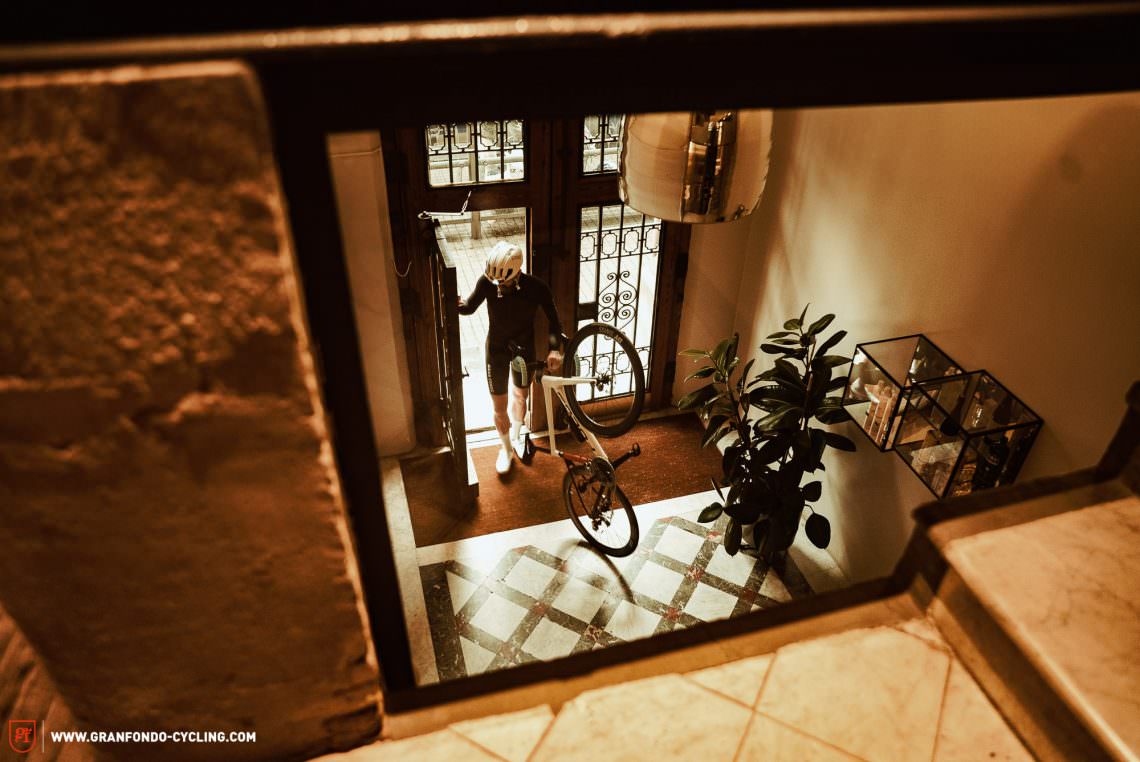
While those of us in Northern Europe spend the dregs of winter lugging around winter bikes with mudguards or succumb to the lure of Zwifting, those fortunate enough to live at 40 degrees latitude enjoy an altogether different scenario. For Catalonian riders, the likelihood of digging out winter bib tights or full-finger gloves is slim to none. Even in the perilous months from November to March, those items will lie undisturbed in wardrobes everywhere from the Pyrenees to the Costa Brava. Such climes lend themselves to blissful conditions for cyclists, and even though the water temperature isn’t quite at the steamy highs that would make us want to dive straight in during summer, we couldn’t turn down the opportunity to flee the dreary German winter for a few days and test the brand new FOCUS IZALCO MAX with the Sagrada Familia in our sights.
However, before you start romanticising the laps you’ll do of this famously unfinished cathedral, it’s worth mentioning that there’s limited scope for coasting through the centre of Barcelona. With so much traffic, it’s far preferable to discover its charm on foot, craning your neck at every opportunity to check out the architecture, much of which is designed by Gaudi.
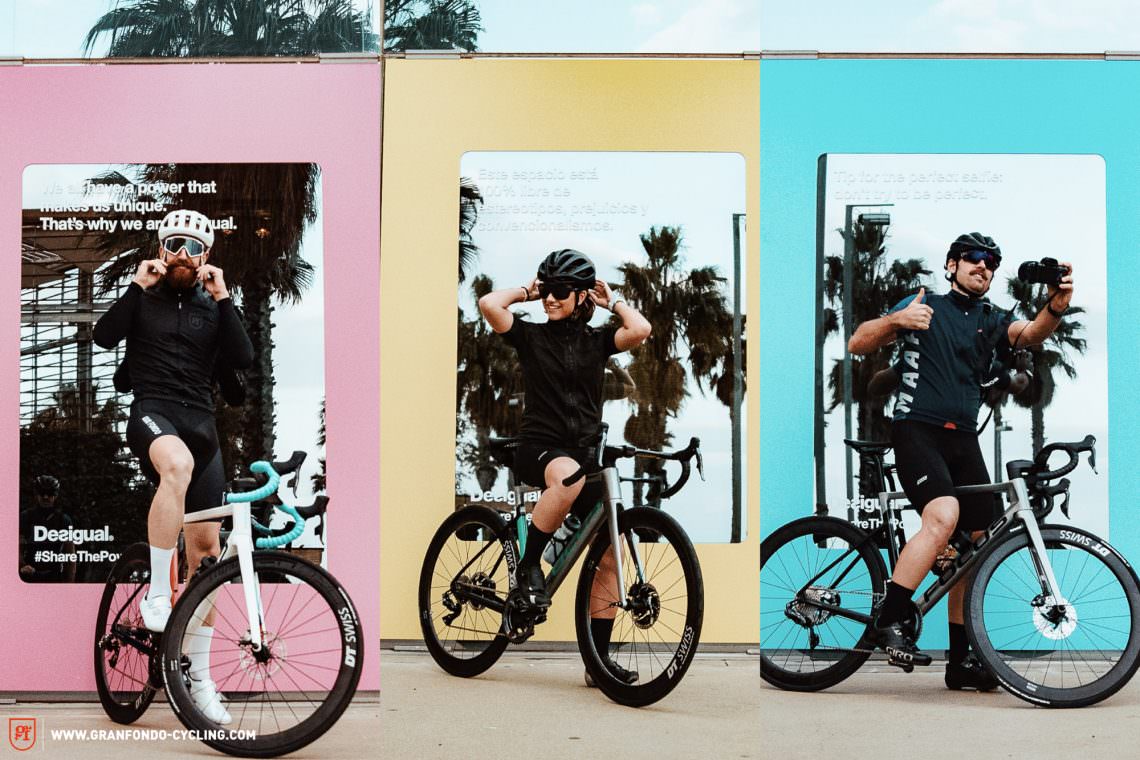
Sitting at the beach you can see the mountains, from the peaks you cann glance at the sea – what a gigantic playground!

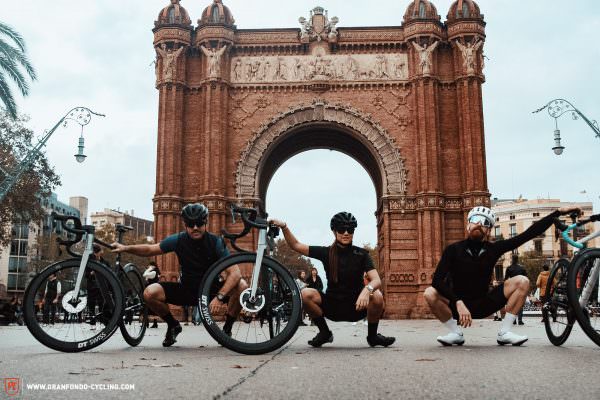
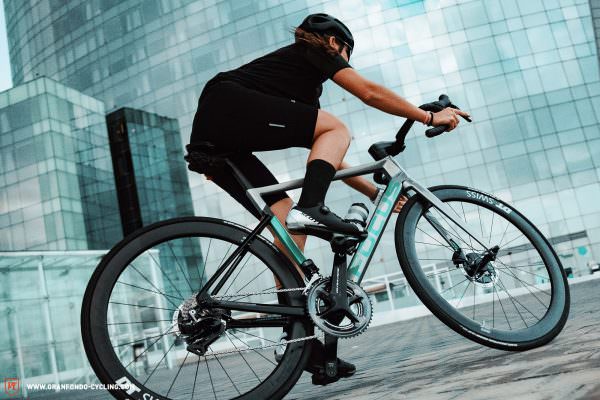
As daylight hours are a precious entity in these southern climes throughout the depths of winter too (the only minor drawback, in our eyes), we quickly threw on our kit as soon as dawn broke. After a quick espresso to fuel us through the earlier part of the ride, we began weaving our way out of the city in the direction of Monserrat. Cars were few and far between at this early hour (unsurprising given the Spaniards’ predisposition for late nights), and the traffic lights were on our side. From the city limits, we knew we had a gentle 45 km incline towards Monserrat, with plenty of time for chatting. Our route traced the Llobregat, Catalonia’s second-longest river, before the climb kicked in.
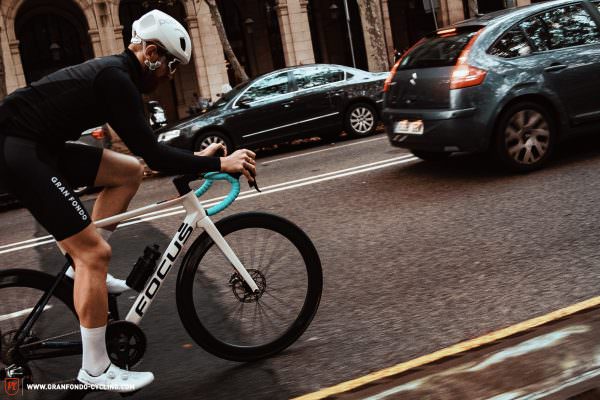
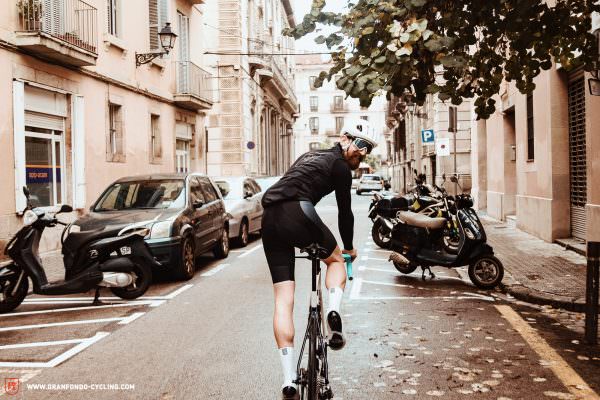
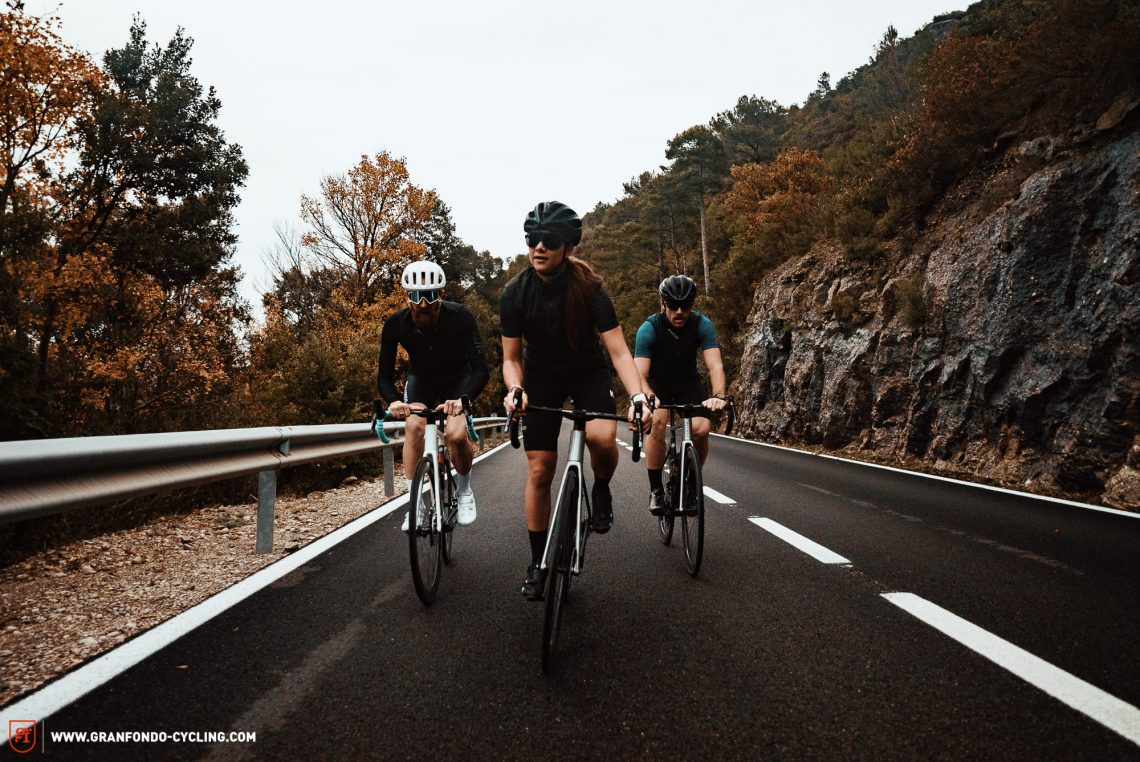
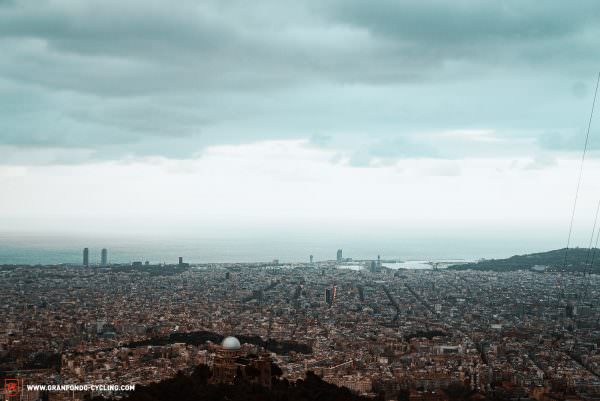
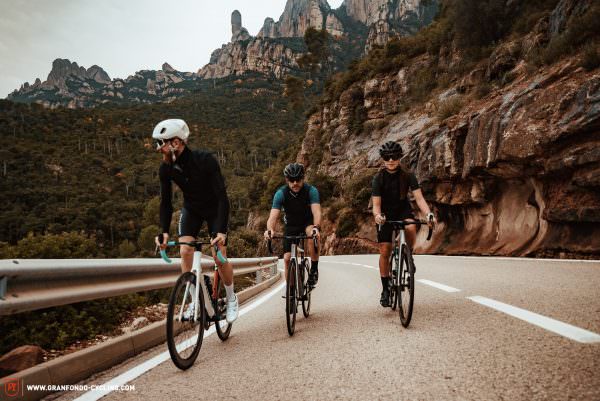
The sight of the Serrat del Moro at 1,040 metres above sea level hovered on the horizon for most of the morning, and we rode through a mystical landscape carpeted in mist, with ever-denser woodland lining the road. As the actual climb to Monserrat only climbs 600 metres over 10 kilometres, it is fair to say that it isn’t really vying for the title of Europe’s toughest climb. But don’t underestimate it – the gradient ramps up to 18% at times and could catch you out. A drawback to this beautiful road is that it really draws in the crowds during the summer and on weekends, so expect a fairly constant stream of buses and tourist-laden cars winding up towards the Abbey.

Paint your front door red and white.
Fill your pockets with lead and silver.
Now the sea will rise and boil.
When we give our bodies to the red rock soil.
When the sun goes down on southern Barcelona.
Every child will turn to stone.
Our hymn of the day:
The Builders and the Butchers – Barcelona
In an almost holy apparition, the Benedictine Monastery Santa Maria de Monserrat materialised in front of us at precisely the right moment. Perhaps you’re familiar with the sinking feeling in the pit of your stomach when you’re barely halfway through the ride and you’re already suffering. Plighted by a tight neck and shoulders and wanting to take a moment to reset, we seized the chance to have a look at the imposing monastery walls that cling to the mountainsides. First built in the 11th century, the monastery is still active with around 70 monks residing there today. It’s little wonder either: how could you not find peace with views like this? But today wasn’t about spiritual salvation, we had a swooping descent on some, quite frankly, heavenly tarmac awaiting us. So, onto the drops!
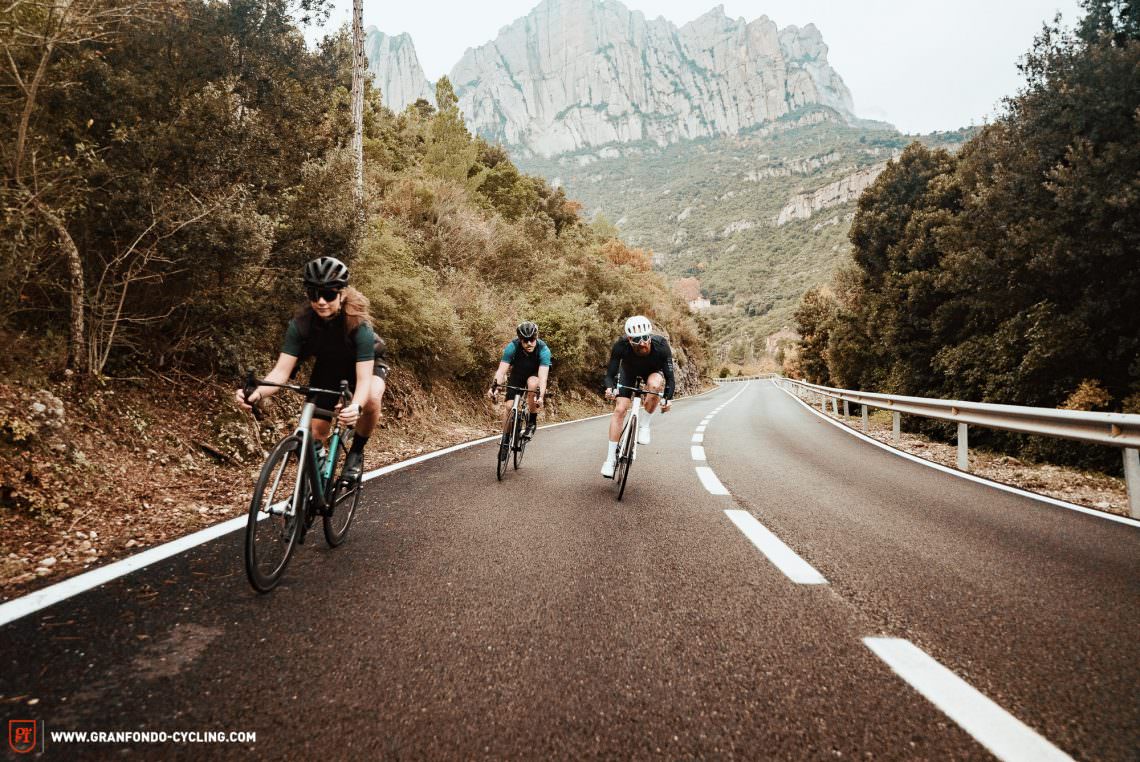
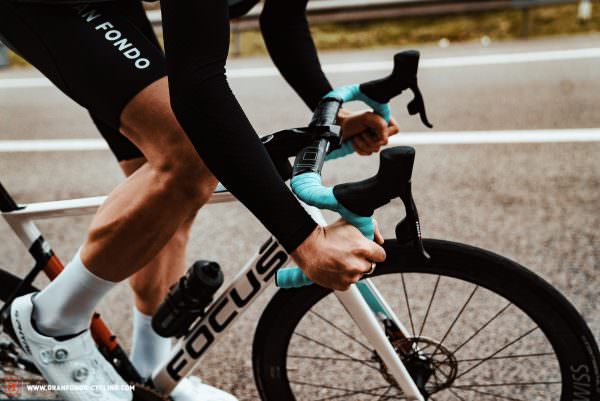
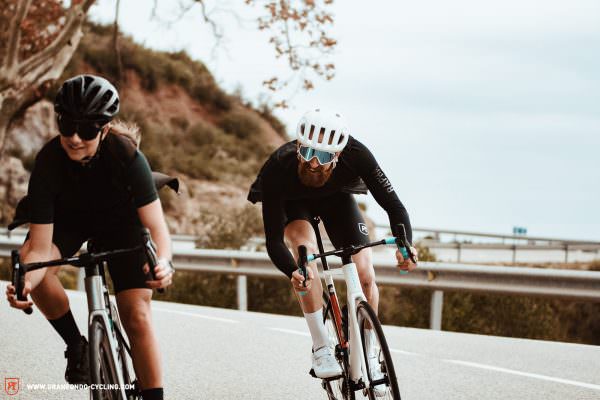
The stretch to Terrassa led us through Mediterranean forests, along roads that rolled over the landscape. By the time we made it to the industrial town, our stomachs were rumbling and we stopped for a proper lunch before the grand finale of the ride. As Catalonia’s third-largest town, there’s no shortage of cafes amidst Terrassa’s architectural treasures.
The almost clinical white façade of the Gaudi-inspired Masia Freixa, a former textile factory, is a fine demonstration of modernist architecture and the medieval Sant Miquel church is another eye-catching feature in the town. Terrassa also holds an annual jazz festival that draws in heaps of fans.
At 100 km into the ride, we begin the ascent of our final climb: Tibidabo. If the name sounds familiar to you, it probably is. This is Barcelona’s ‘home mountain’ at 512 metres above sea level. At the top, there’s a theme park and views for miles. We stopped for the obligatory selfie in front of the Ferris wheel, admiring the view of the city’s geometric, grid-like layout.
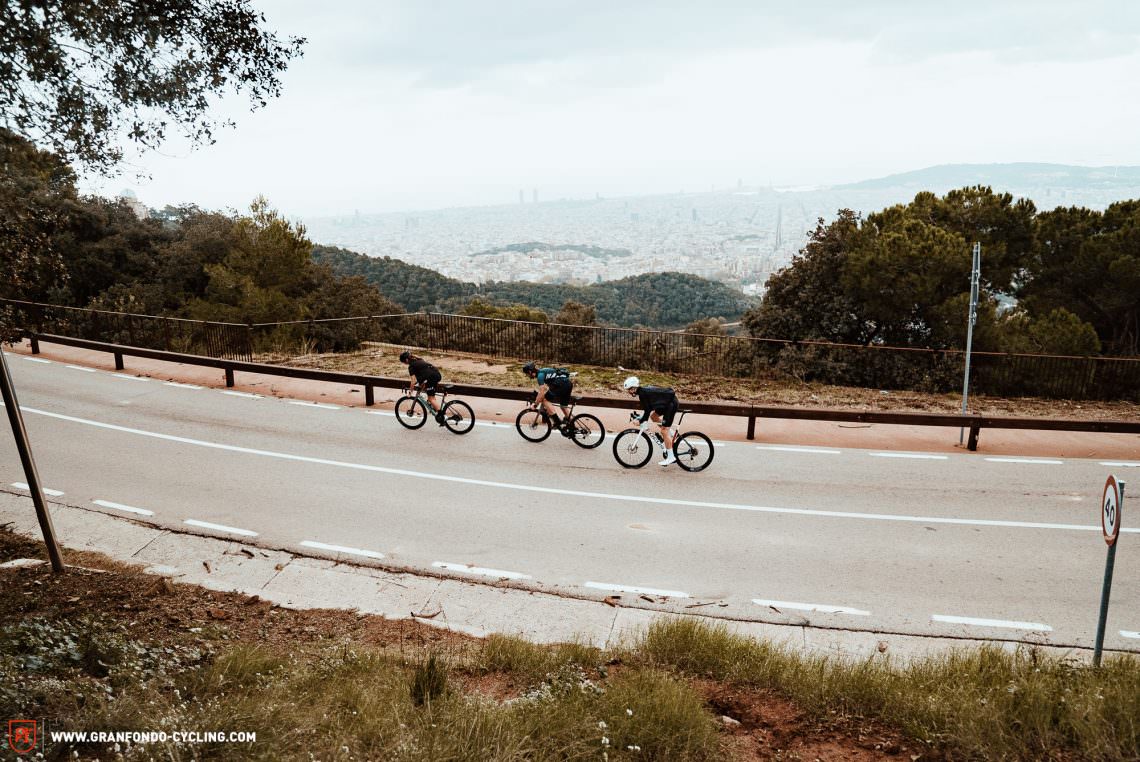
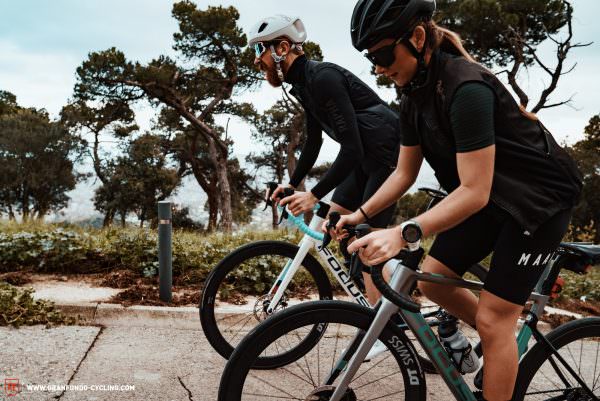
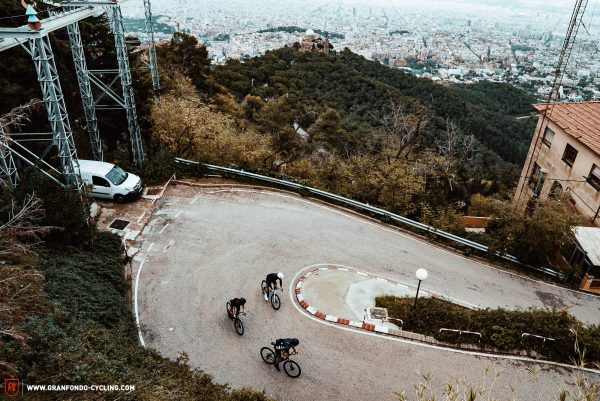
If you can’t bring your bike into the Café you better watch out – greedy finger alert
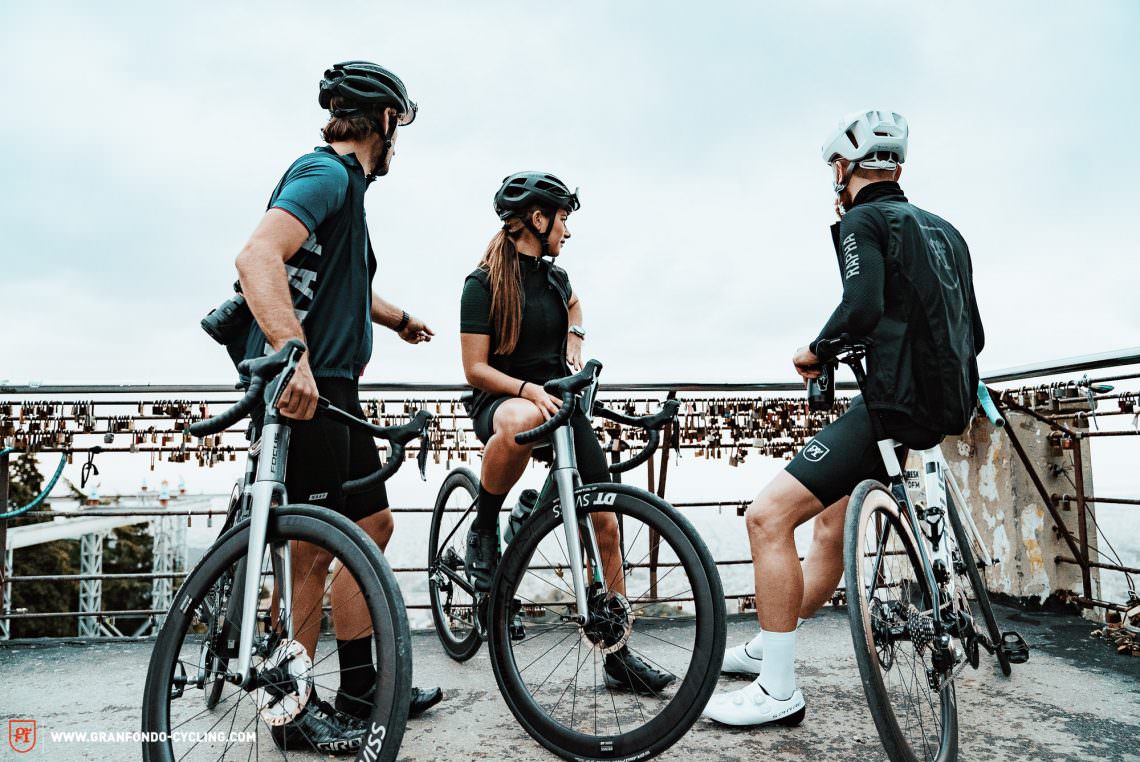
We chose an alternative for our descent into the city, opting for the westerly route via Vallvidrera instead of the more common eastern entrance past Rabassada into the city. From here, we pulled into On Y Va for a quick debrief and coffee with long-time friend Fer, before continuing to what has become our all-time favourite Barcelona haunt. Ugot, a great brunch place, is run by Gil, who knows exactly how to please the palates of hungry cyclists with his specialities. “Egg Benedict Yaffo?” “Yes, please!” After 120 km and 2,000 metres of climbing, the flamingo wallpaper is where we eventually called it a day.
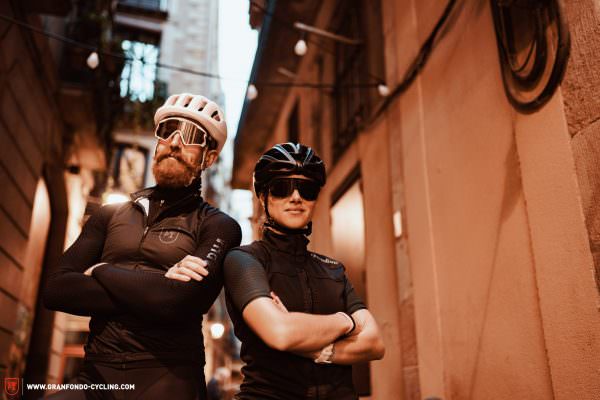
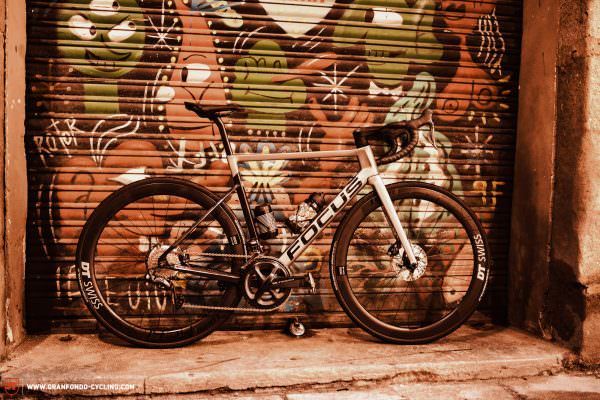
For anyone heading to Barcelona, we’ve handily provided the GPX file here. So with a plan for your first day in the city now covered, you might be wondering what else to do. We fully advocate the alternative route up to Tibidabo past Rabassada. Loosen off the legs with an easy ride, then head to the harbour and tuck into one of Pizza Parking’s finest pizzas before rounding off your day with a drink at Bar 33/45 – there’s no need to worry about bike parking here because you’re welcome to bring it inside. When it comes to Barcelona, that’s something that shouldn’t be underestimated.

Barcelona is one of those places that we never tire of visiting. Over and over again we lose our hearts to its architecture, cuisine and residents who shoot right off the end of the cool scale. The vibe – which is somewhere between revolution and casual southern European languor – must be what keeps us returning. So, what’s stopping you?
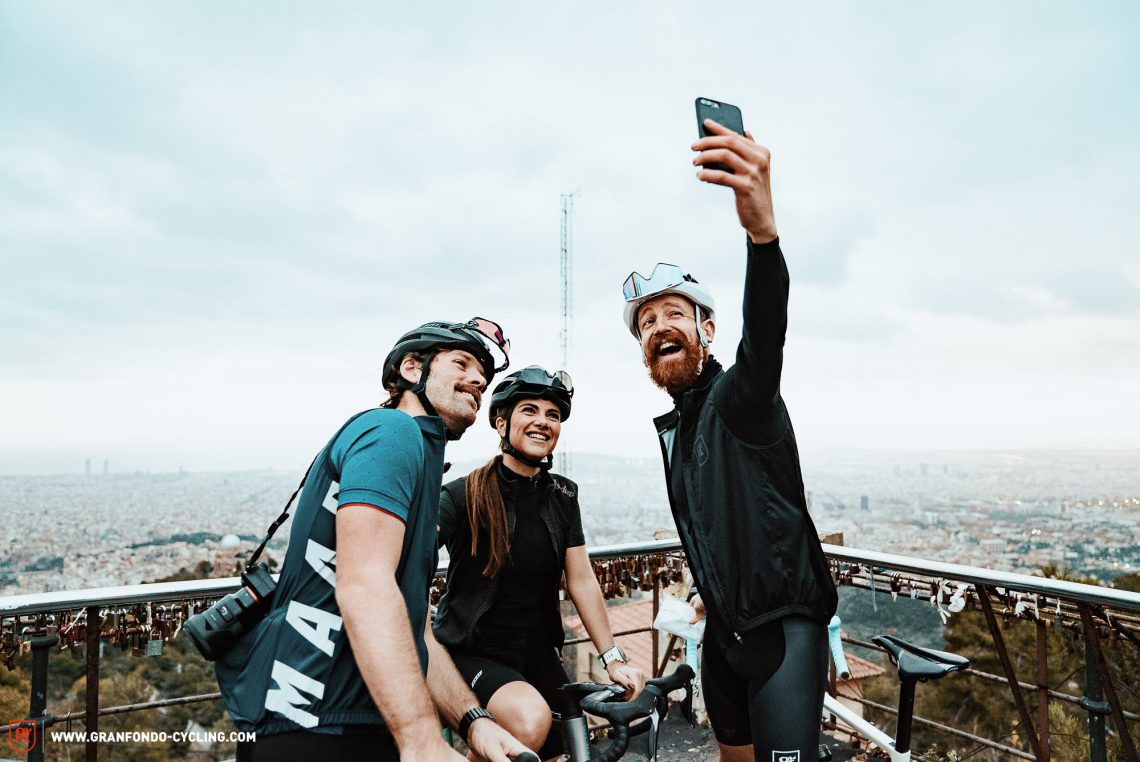
This article is from GRAN FONDO issue #011
GRAN FONDO Cycling Magazine is published in a digital app format in both English and German. Download the app for iOS or Android to read all articles on your tablet or smartphone. 100% free!

Did you enjoy this article? If so, we would be stoked if you decide to support us with a monthly contribution. By becoming a supporter of GRAN FONDO, you will help secure a sustainable future for high-quality cycling journalism. Click here to learn more.
Words & Photos: Alex de Cortada, Benjamin Topf









